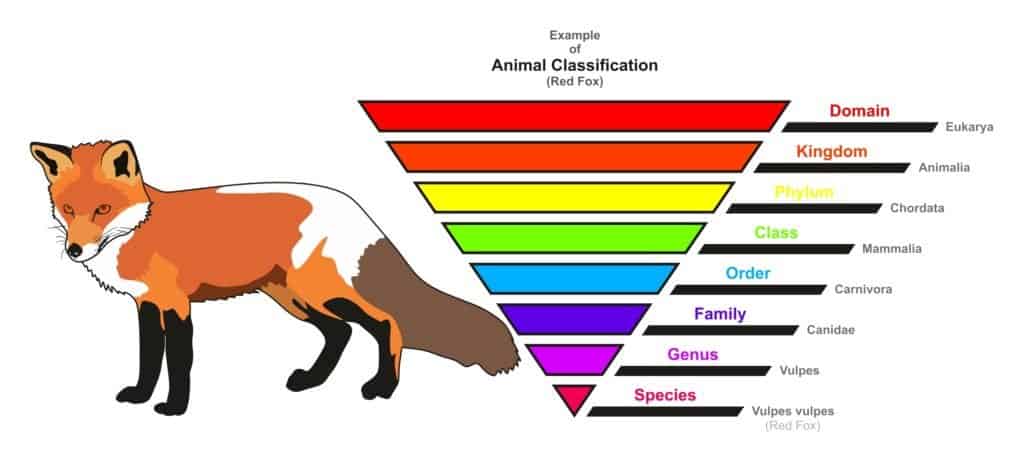In biology, order is a taxonomic rank defined as a group of similar or related families in animals, plants, and even viruses.
Summary
Order is a taxonomic rank used in biology to classify organisms in families that share similar characteristics. For instance, mammals are under the class Mammalia and have many orders below that, such as Primates, Carnivora (carnivores), Chiroptera (bats), and so on.
This taxonomic rank is recognized by the nomenclature codes, rulebooks that govern biological taxonomy. Taxonomists decide what organisms belong in what order or whether an order should be recognized at all.
Certain groups of organisms follow consistent naming within an order. For instance, birds and fishes use the suffix –iformes, which means “having the form of.” As an example, Passeriformes is an order of perching birds that includes more than half of all bird species.
Hierarchy of Biological Classifications

An animal classification for red fox, based on the Linnaeus Method
©udaix/Shutterstock.com
The taxonomic rank of “order” was first introduced by Augustus Quirinus Rivinus, a German botanist that applied the method to plants in the 1690s. Carl Linnaeus, a Swedish biologist and physician, was the first to apply the ranking to all three natural kingdoms – minerals, plants, and animals.
Order is between Class and Family in the taxonomic rank. However, in some cases, it can have an immediately higher rank of superorder and a directly beneath rank of suborder.
In Zoology, the Linnaean orders are used pretty consistently across natural groups. While not all of the original order names are still in use, some continue, such as Diptera for flies, gnats, etc., and Lepidoptera for butterflies and moths.
In virology, there are fourteen order, each ending with –virales. The classification of viruses includes realm, subrealm, kingdom, subkingdom, phylum, subphylum, class, subclass, order, suborder, family, subfamily, genus, subgenus, and species.



